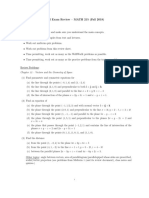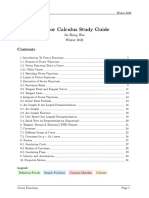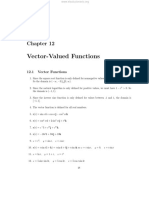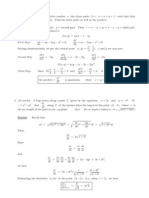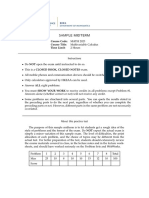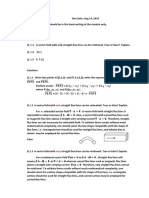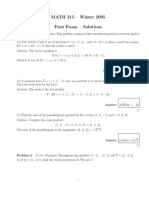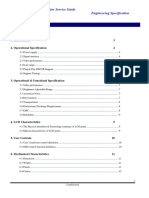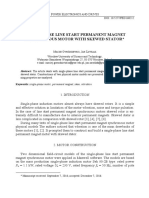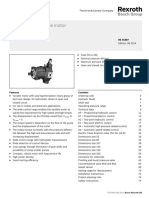2/9/24, 7:13 PM 13.
1 (ET9) - MACT 2123, section 2, Spring 2024 | WebAssign
EN fatimanageh@aucegypt.edu
(Sign out)
Home My Assignments Grades
Communication Calendar
My eBooks
MACT 2123, section 2, Spring 2024
INSTRUCTOR
13.1 (ET9) (Homework) Ahmed Elsonbaty
American University In Cairo
Current Score
QUESTION 1 2 3 4 5 6 7 8 9 10 11 12 13
TOTAL SCORE
POINTS 1/1 1/1 1/1 1/1 3/3 1/1 2/2 1/1 1/1 2/2 1/1 1/1 15/15
31/31 100.0%
Due Date
SAT, FEB 10, 2024
11:59 PM GMT+2
Request Extension
Assignment Submission & Scoring
Assignment Submission
For this assignment, you submit answers by question parts. The number of submissions remaining for each question part only
changes if you submit or change the answer.
Assignment Scoring
Your best submission for each question part is used for your score.
https://www.webassign.net/web/Student/Assignment-Responses/submit?pos=12&dep=34052234&tags=autosave#question5094177_12 1/12
�2/9/24, 7:13 PM 13.1 (ET9) - MACT 2123, section 2, Spring 2024 | WebAssign
Find the domain of the vector function. (Enter your answer using interval notation.)
t
r(t) = ln(t + 4), , 2t
36 − t 2
(−4,6)
Find the limit.
t2
lim e −6t i + j + sin(2t) k
t→0 sin 2(t)
(1,1,0)
https://www.webassign.net/web/Student/Assignment-Responses/submit?pos=12&dep=34052234&tags=autosave#question5094177_12 2/12
�2/9/24, 7:13 PM 13.1 (ET9) - MACT 2123, section 2, Spring 2024 | WebAssign
Sketch the curve with the given vector equation. Indicate with an arrow the direction in which t increases.
r(t) = sin(2t), t
https://www.webassign.net/web/Student/Assignment-Responses/submit?pos=12&dep=34052234&tags=autosave#question5094177_12 3/12
�2/9/24, 7:13 PM 13.1 (ET9) - MACT 2123, section 2, Spring 2024 | WebAssign
Sketch the curve with the given vector equation. Indicate with an arrow the direction in which t increases.
r(t) = t, 4 − t, 2t
https://www.webassign.net/web/Student/Assignment-Responses/submit?pos=12&dep=34052234&tags=autosave#question5094177_12 4/12
�2/9/24, 7:13 PM 13.1 (ET9) - MACT 2123, section 2, Spring 2024 | WebAssign
Sketch the curve with the given vector equation by finding the following points. (Select Update Graph to see your response plotted on
the screen. Select the Submit button to grade your response.)
r(t) = 2, t, 5 − t 2
r(−5) (x, y, z) =
2,−5,−20
r(0) (x, y, z) =
2,0,5
r(5) (x, y, z) =
2,5,−20
loading
Update Student Response Response Description
Graph
https://www.webassign.net/web/Student/Assignment-Responses/submit?pos=12&dep=34052234&tags=autosave#question5094177_12 5/12
�2/9/24, 7:13 PM 13.1 (ET9) - MACT 2123, section 2, Spring 2024 | WebAssign
Sketch the curve with the given vector equation. Indicate with an arrow the direction in which t increases.
r(t) = 4 cos(t)i + 4 sin(t)j + k
Find a vector equation and parametric equations for the line segment that joins P to Q.
P(1, −1, 4), Q(4, 5, 1)
<1+3t,6t−1,4−3t>
vector equation r(t) =
1+3t,6t−1,4−3t
parametric equations (x(t), y(t), z(t)) =
https://www.webassign.net/web/Student/Assignment-Responses/submit?pos=12&dep=34052234&tags=autosave#question5094177_12 6/12
�2/9/24, 7:13 PM 13.1 (ET9) - MACT 2123, section 2, Spring 2024 | WebAssign
Find an equation of the plane that contains the curve with the given vector equation.
r(t) = t, 3, t 2
y=3
Find an equation of the plane that contains the curve with the given vector equation.
r(t) = t, t 3, t
−6x+6z=0
At what points does the helix r(t) = sin(t), cos(t), t intersect the sphere x 2 + y 2 + z 2 = 50? (Round your answers to three
decimal places. If an answer does not exist, enter DNE.)
−0.657,0.754,−7
(x, y, z) =
(smaller t-value)
0.657,0.754,7
(x, y, z) =
(larger t-value)
https://www.webassign.net/web/Student/Assignment-Responses/submit?pos=12&dep=34052234&tags=autosave#question5094177_12 7/12
�2/9/24, 7:13 PM 13.1 (ET9) - MACT 2123, section 2, Spring 2024 | WebAssign
Find a vector function, r(t), that represents the curve of intersection of the two surfaces.
The cone z = x 2 + y 2 and the plane z = 4 + y
r(t) =
<t,t2−168,t2+168>
If two objects travel through space along two different curves, it's often important to know whether they will collide. (Will a missile
hit its moving target? Will two aircraft collide?) The curves might intersect, but we need to know whether the objects are in the
same position at the same time. Suppose the trajectories of two particles are given by the vector functions
r 1(t) = t 2, 9t − 18, t 2 r 2(t) = 15t − 54, t 2, 13t − 42
for t ≥ 0. Find the values of t at which the particles collide. (Enter your answers as a comma-separated list. If an answer does not
exist, enter DNE.)
t=
https://www.webassign.net/web/Student/Assignment-Responses/submit?pos=12&dep=34052234&tags=autosave#question5094177_12 8/12
�2/9/24, 7:13 PM 13.1 (ET9) - MACT 2123, section 2, Spring 2024 | WebAssign
13. [15/15 Points] DETAILS PREVIOUS ANSWERS SCALCET9M 13.1.061.
MY NOTES ASK YOUR TEACHER
Suppose u and v are vector functions that possess limits as t → a and let c be a constant.
Definition 1
If r(t) = f(t), g(t), h(t), then
lim r(t) = lim (f(t)), lim (g(t)), lim (h(t)) provided the limits of the
t→a t→a t→a t→a
component functions exist.
Limit Laws
Suppose that c is a constant and the limits lim f(x) and lim g(x) exist.
x→a x→a
Then we have the following.
1. lim f(x) + g(x) = lim (f(x)) + lim (g(x))
x→a x→a x→a
2. lim f(x) − g(x) = lim (f(x)) − lim (g(x))
x→a x→a x→a
3. lim cf(x) = c lim (f(x))
x→a x→a
4. lim f(x)g(x) = lim (f(x)) · lim (g(x))
x→a x→a x→a
lim (f(x))
f(x) x→a
5. lim = if lim g(x) ≠ 0
x→a g(x) lim (g(x)) x→a
x→a
Properties of Vectors
If a, b, and c are vectors in V n and c and d are scalars, then we have
the following.
1. a+b=b+a
2. a + (b + c) = (a + b) + c
3. a+0=a
4. a + (−a) = 0
5. c(a + b) = ca + cb
6. (c + d)a = ca + da
7. (cd)a = c(da)
8. 1a = a
Prove the following properties of limits. Select the property that justifies each step of the proofs provided. You may find the above
definition, limit laws, and properties of vectors useful.
(a) Prove the following.
lim u(t) + v(t) = lim (u(t)) + lim (v(t))
t→a t→a t→a
Working backward, we have
lim (u(t)) + lim (v(t)) = lim (u 1(t)), lim (u 2(t)), lim (u 3(t))
t→a t→a t→a t→a t→a
+ lim (v 1(t)), lim (v 2(t)), lim (v 3(t)) by Definition 1
t→a t→a t→a
https://www.webassign.net/web/Student/Assignment-Responses/submit?pos=12&dep=34052234&tags=autosave#question5094177_12 9/12
�2/9/24, 7:13 PM 13.1 (ET9) - MACT 2123, section 2, Spring 2024 | WebAssign
and the limits of these component functions must each exist since the vector functions both possess limits as t → a. Then adding
the two vectors and using the addition property of limits for real-valued functions, we have the following.
lim (u(t)) + lim (v(t)) = lim (u 1(t)) + lim (v 1(t)),
t→a t→a t→a t→a
lim (u 2(t)) + lim (v 2(t)),
t→a t→a
lim (u 3(t)) + lim (v 3(t)) by addition of two vectors
t→a t→a
= lim u 1(t) + v 1(t) ,
t→a
lim u 2(t) + v 2(t) ,
t→a
lim u 3(t) + v 3(t) by Limit Law 1
t→a
= lim u 1(t) + v 1(t), u 2(t) + v 2(t), u 3(t) + v 3(t) by Definition 1
t→a
= lim u(t) + v(t)
t→a
(b) Prove the following.
lim (cu(t)) = c lim (u(t))
t→a t→a
lim (cu(t)) = lim cu 1(t), cu 2(t), cu 3(t)
t→a t→a
= lim (cu 1(t)), lim (cu 2(t)), lim (cu 3(t)) by Definition 1
t→a t→a t→a
= c lim (u 1(t)), c lim (u 2(t)), c lim (u 3(t)) by Limit Law 3
t→a t→a t→a
= c lim (u 1(t)), lim (u 2(t)), lim (u 3(t)) by Properties of Vectors 5
t→a t→a t→a
= c lim u 1(t), u 2(t), u 3(t) by Definition 1
t→a
= c tlim
→a
(u(t))
(c) Prove the following.
lim u(t) · v(t) = lim (u(t)) · lim (v(t))
t→a t→a t→a
https://www.webassign.net/web/Student/Assignment-Responses/submit?pos=12&dep=34052234&tags=autosave#question5094177_12 10/12
�2/9/24, 7:13 PM 13.1 (ET9) - MACT 2123, section 2, Spring 2024 | WebAssign
lim (u(t)) · lim (v(t)) = lim (u 1(t)), lim (u 2(t)), lim (u 3(t)) · lim (v 1(t)), lim (v 2(t)), lim (v 3(t))
t→a t→a t→a t→a t→a t→a t→a t→a
= lim (u 1(t)) lim (v 1(t))
t→a t→a
+ lim (u 2(t)) lim (v 2(t))
t→a t→a
+ lim (u 3(t)) lim (v 3(t)) by definition of dot product
t→a t→a
= tlim
→a
(u 1(t)v 1(t)) + lim (u 2(t)v 2(t)) + lim (u 3(t)v 3(t)) by Limit Law 4
t→a t→a
= lim u 1(t)v 1(t) + u 2(t)v 2(t) + u 3(t)v 3(t) by Limit Law 1
t→a
= lim u(t) · v(t)
t→a
(d) Prove the following.
lim u(t) ✕ v(t) = lim (u(t)) ✕ lim (v(t))
t→a t→a t→a
lim (u(t)) ✕ lim (v(t)) = lim (u 1(t)), lim (u 2(t)), lim (u 3(t)) ✕ lim (v 1(t)), lim (v 2(t)), lim (v 3(t))
t→a t→a t→a t→a t→a t→a t→a t→a
= lim (u 2(t)) lim (v 3(t)) − lim (u 3(t)) lim (v 2(t)) ,
t→a t→a t→a t→a
lim (u 3(t)) lim (v 1(t)) − lim (u 1(t)) lim (v 3(t)) ,
t→a t→a t→a t→a
lim (u 1(t)) lim (v 2(t)) − lim (u 2(t)) lim (v 1(t)) by definition of cross product
t→a t→a t→a t→a
= lim (u 2(t)v 3(t)) − lim (u 3(t)v 2(t)) ,
t→a t→a
lim (u 3(t)v 1(t)) − lim (u 1(t)v 3(t)) ,
t→a t→a
lim (u 1(t)v 2(t)) − lim (u 2(t)v 1(t)) by Limit Law 4
t→a t→a
= lim u 2(t)v 3(t) − u 3(t)v 2(t) ,
t→a
lim u 3(t)v 1(t) − u 1(t)v 3(t) ,
t→a
lim u 1(t)v 2(t) − u 2(t)v 1(t) by Limit Law 2
t→a
= lim u 2(t)v 3(t) − u 3(t)v 2(t),
t→a
u 3(t)v 1(t) − u 1(t)v 3(t),
u 1(t)v 2(t) − u 2(t)v 1(t) by Definition 1
= lim u(t) ✕ v(t)
t→a
https://www.webassign.net/web/Student/Assignment-Responses/submit?pos=12&dep=34052234&tags=autosave#question5094177_12 11/12
�2/9/24, 7:13 PM 13.1 (ET9) - MACT 2123, section 2, Spring 2024 | WebAssign
View Previous Question Question 13 of 13
Home My Assignments Request Extension
Copyright © 1998 - 2024 Cengage Learning, Inc. All Rights Reserved TERMS OF USE PRIVACY
https://www.webassign.net/web/Student/Assignment-Responses/submit?pos=12&dep=34052234&tags=autosave#question5094177_12 12/12

